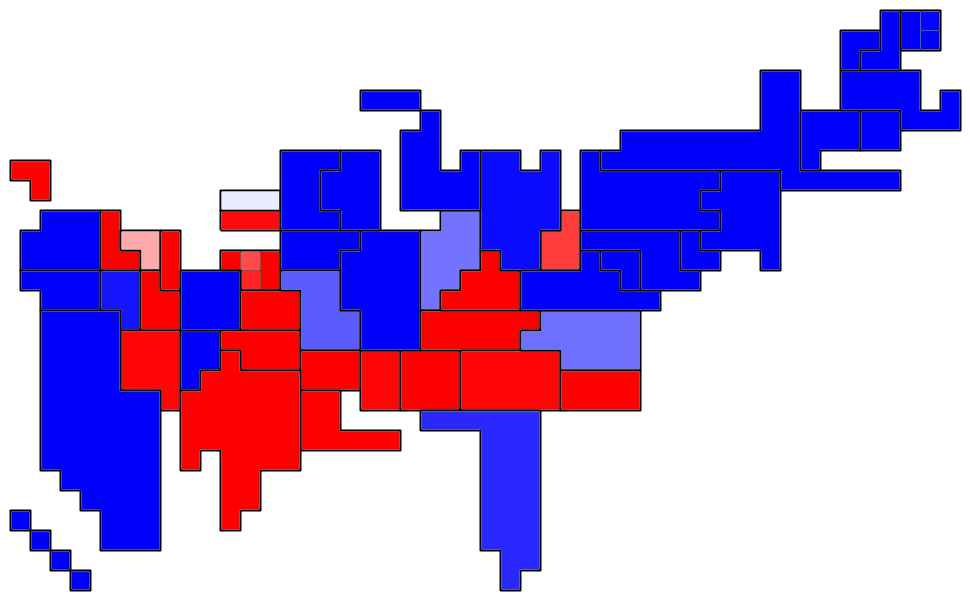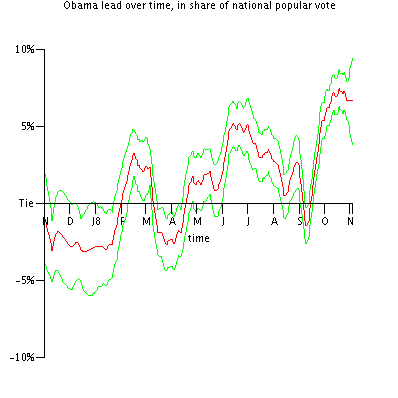Swingers
There are no new polls, but after some final tweaks, Kerry now has a 49% chance of winning the election, with 266.77 expected electoral votes.
Given all the talk out there about so-called swing states, I ask, "What is a swing state, and which states are swing states?" My answer is that a state is a swing state if, when I run my election simulations, there is a high correlation between Kerry (or Bush) winning the state and Kerry (or Bush) winning the election. The most swingy of the swing state is Ohio, which has a correlation of about 0.51. The states have correlations with the national results of:
Ohio, 0.51;
Michigan, 0.37;
Pennsylvania, 0.36;
Florida and Wisconsin, 0.35;
Missouri, 0.32;
West Virginia, 0.28;
Arkansas and Virginia, 0.25;
New Hamphsire, 0.20;
Oregon, Iowa, and Minnesota, 0.19;
New Mexico, 0.17;
Nevada, 0.14;
New Jersey, 0.12;
Arizona, Washington, and Colorado, 0.11;
North Carolina, 0.10;
Delaware, 0.06;
California, 0.05;
Georgia and South Carolina, 0.04;
Maine (2nd and 1st), 0.02;
Vermont, Hawaii, Maryland, Tennessee, Nebraska (2nd and at-large), Louisiana, and North Dakota, 0.01;
everything else, 0.00.
If there were 51 states, each with one electoral vote, independent from one another, and each with a 50-50 chance of going to Kerry or Bush, then each state would have a correlation of 15801325804719/140737488355328 = 0.1122751727. So that's what I use as a dividing line between swing and not-swing. Under this criterion, the swing states are Ohio, Michigan, Pennsylvania, Florida, Wisconsin, Missouri, West Virginia, Arkansas, Virginia, New Hampshire, Oregon, Iowa, Minnesota, New Mexico, Nevada, New Jersey, Arizona, and Washington. Except, perhaps, for the inclusion of Virginia (need more polls!) and New Jersey, I think most people would consider these to be swing.



0 Comments:
Post a Comment
<< Home